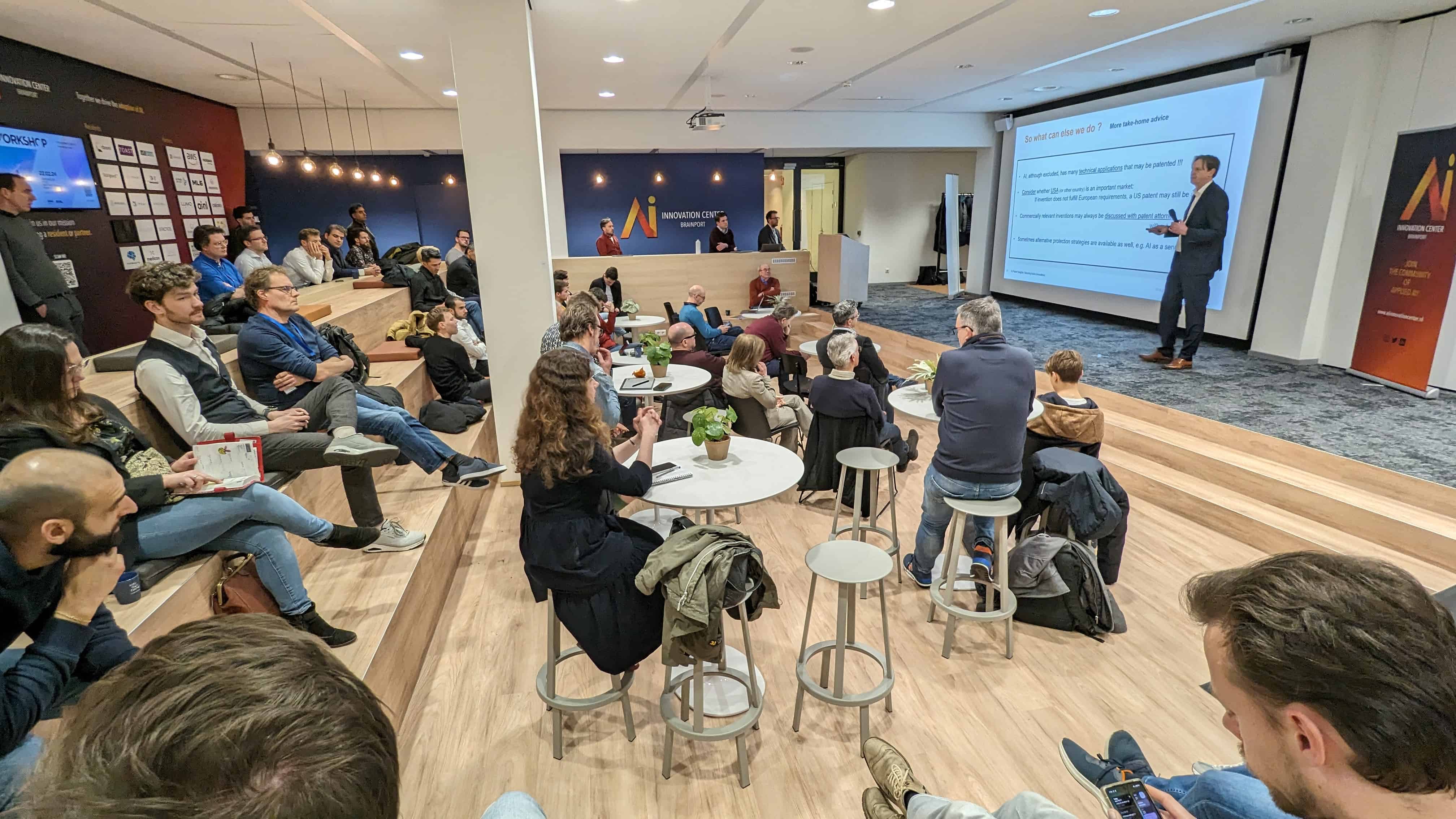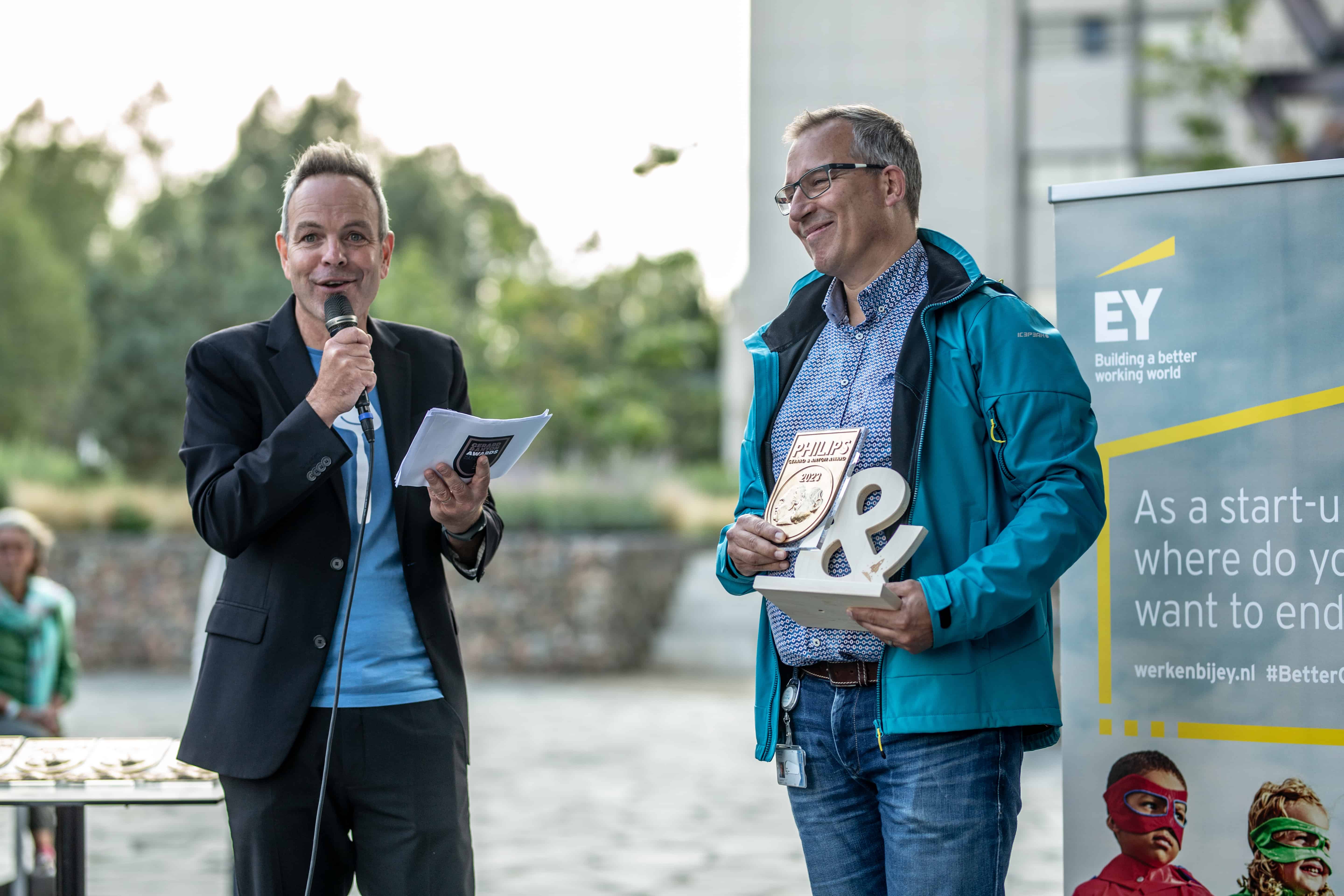
As part of its policy, the Eindhoven University of Technology (TU/e) strives to have more entrepreneurs among its scientists, bringing fundamental research out of labs and impacting the world. Therefore, protecting knowledge through intellectual property is paramount to ensure that knowledge created within the university impacts society, as the basis for a spinoff, or is licensed to a partner company. In the case of a spinoff, it represents a fundamental asset to backing it and providing a solid foundation for appealing to investors.
Why this is important
Often forgotten, intellectual property protection is a key part of the innovation process, helping to take research out from university labs to impact society.
Intellectual property (IP) refers to creations of the mind, such as inventions, designs, and literary and artistic works. IP is protected by law through trademarks, patents, and copyrights, enabling creators to earn recognition and rights to control its use. As a cornerstone of the innovation process, IP helps protect the investments made to make technological advances.
IP is also a priority at The Gate, the regional helpdesk for deep-tech startups in the Brainport Eindhoven region. Located at the TU/e campus, it offers different services to aspiring entrepreneurs. As such, it also has a group of IP support experts to guide TU/e scientists in navigating the landscape of IP protection. Nataša Maršić, Anna Wetzels, and Suki Sandhu – all three of them with extensive experience within the academic and corporate IP world – are the three IP managers.
“IP is one of those things that, as an individual inventor or as a startup, you don’t have the money for or don’t think about. When I worked for a multinational, I saw many startup acquisitions falling apart because their IP was not on point,” warns Wetzels. “IP protection should not be an afterthought, and it should not be an accident, but part of a startup business strategy,” underlines Wetzels.
From lab to the real world
TU/e scientists can submit an invention disclosure to The Gate to set the ball rolling and kickstart the valorization process at the university. “Then we have a two-pronged approach: one of the IP managers assesses the IP rights for novelty and inventiveness relevant to the invention’s patentability. Concurrently, one of the business developers evaluates the potential business case for the invention to determine whether to license and/or transfer the IP to an industrial partner or create a TU/e spin-off company,” explains Sandhu.
From there, the process of evolving the innovation starts. Some of the available options are registering patents, applying for design protection, and identifying copyrightable material and in some universities confidential know-how (potential trade secrets). Inventors are involved at all times, seeing the evolution of that product.



A relationship of trust
Yet, much work remains to be done to capture inventions at the very beginning and illustrate to scientists and local entrepreneurs the possibilities IP protection offers. Therefore, The Gate’s IP managers are active in holding workshops and informative events to raise awareness around the topic. The managers also spend time at the university labs, not only to see new research coming to life but to bond with scientists and inform them as much as they can about IP.
“Especially when they are at the beginning of their careers, scientists are worried that the process of patent protection would interfere with their careers,” explains Maršić. “Then it’s up to us to carefully explain to them that it is only important to file the patent application before they publicly disclose their research results. After that, they can publish the results in scientific journals, present their work at conferences, or defend their theses. An essential part of our work is all about building a trusting relationship between the scientists and us.”
IP enhances research
One of the IP team’s objectives is to be involved in the creative process as soon as possible. In fact, they can help not only with valorizing knowledge but also with research. “For instance, one researcher may have to pivot their work based on the patent literature we find out as a result of assessing an invention disclosure. In our experience, familiarity with relevant patent literature enriches the work of TU/e researchers,” shares Wetzels.
For academics, having the chance to use the expertise of IP lawyers can really be a game changer. “As a former scientist, I believe having an IP lawyer supporting a researcher in potentially drafting an invention disclosure is extremely valuable. A scientist is challenged on inventiveness, on looking at differences with the prior art, and other aspects one may not have thought of,” underlines Luca Zappaterra. Having a background in research, he underwent the IP process several times in the past, and he’s now a business developer within the Center for Wireless Technology Eindhoven (CWTe) at TU/e.
The importance of deciding
Whether or not an invention lays the foundation for a new company to commercialize that technology is decided on a case-by-case basis. The TU/e checks with their industry partners to determine if they can commercialize that invention in the short term. In addition, the TU/e team can determine whether to establish a TU/e spinoff to develop products further, and then an industrial partner can jump in and acquire that company. Deciding one way or another and creating IP assets to support such decisions is what matters the most.
Most importantly, IP managers act as proper innovation enablers. “IP managers and researchers can be part of the research and innovation process. We show scientists that research and valorization are not all about sitting in the laboratory generating theory and data for publication. These results can enhance society: it can make the life of an ill patient or a child better. I think we underestimate the work scientists do and IP’s role in supporting innovation by publishing knowledge and getting us to the next level,” concludes Sandhu.








